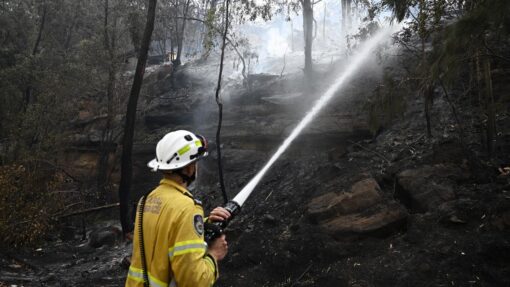Poor forecasts blamed for flood response
Jack Gramenz |
Forecasts on which emergency services agencies based their preparation for flooding in northern NSW have been blamed for failing to predict the severity of the conditions.
Reality exceeded the forecasts provided by the Bureau of Meteorology, leaving emergency services dealing with an unprecedented, unpredicted situation, agency heads told a parliamentary committee on Wednesday.
Resilience NSW Commissioner Shane Fitzsimmons repeatedly disputed suggestions someone had “dropped the ball” in the response.
“In hindsight, it would have been great to have all manner of things – if there was a forecast that indicated what ultimately happened, and there wasn’t a forecast,” Mr Fitzsimmons told the hearing.
The State Emergency Service was liaising with the Australian Defence Force from February 21.
A February 25 BOM briefing suggested flood levels had peaked in Lismore in the state’s northeast and that moderate flooding was predicted, which resources were in place to deal with, Acting SES Commissioner Daniel Austin told the hearing.
Based on the initial forecasts, the ADF was not expected to provide specialist resources such as helicopters, Mr Fitzsimmons said.
When the flood occurred, water peaked metres over the predicted level, and above previous record heights.
On February 27, the SES activated a request that sent between 70 and 80 ADF personnel to Lismore to assist with doorknocking and sandbagging.
The next day, another request was made for helicopters and high-clearance vehicles as Lismore residents who had not swum from their homes during the night clambered onto roofs to escape rising floodwaters.
Mr Austin disputed reports only two SES boats were operating as the community used their own boats and surfboards to rescue others.
He said Lismore SES ordinarily had nine boats, but the sheer volume of people requiring rescue meant they could not get to everyone.
Helicopters were also being used, he said, but not all were capable of winching people from rooftops.
Rural Fire Service Commissioner Rob Rogers said RFS helicopters were in the air, winching about 75 people to safety as well as guiding boats below.
Fire and Rescue NSW Acting Commissioner Megan Stiffler said her agency had 27 in-water technicians in Lismore who also contributed to more than a hundred rescues.
When floods returned in March, emergency services faced a similar shortfall of information, as well as damage from previous floods, the hearing was told.
Mr Austin said reports of malfunctioning river-height gauges had yet to be investigated, adding he had been advised by the BOM all gauges were online.
The risk of the levee overtopping prompted an evacuation order, but the risk did not materialise and the order was cancelled, Mr Austin said.
“Unforecast, significant weather” then hit and flash flooding occurred before the Wilsons River overtopped the levee.
A siren on a Fire and Rescue NSW building, previously used to warn of the levee overtopping although not a formal warning procedure, could not be used because there was no power.
Power has still not been restored to some areas, with businesses using generators.
“A whole area that was getting close to being fully restored was completely inundated and damaged again so it’s a significant setback,” Mr Fitzsimmons said.
More than 3500 people have been placed in emergency accommodation and Mr Fitzsimmons said some are facing the prospect of being moved again.
People temporarily accommodated in motels and hotels are being rehoused to make way for holidaymakers booked in over Easter.
Mr Fitzsimmons said a few hundred people are being moved as far north as Brisbane and will be returned following the holidays.
The hearing continues.
AAP


